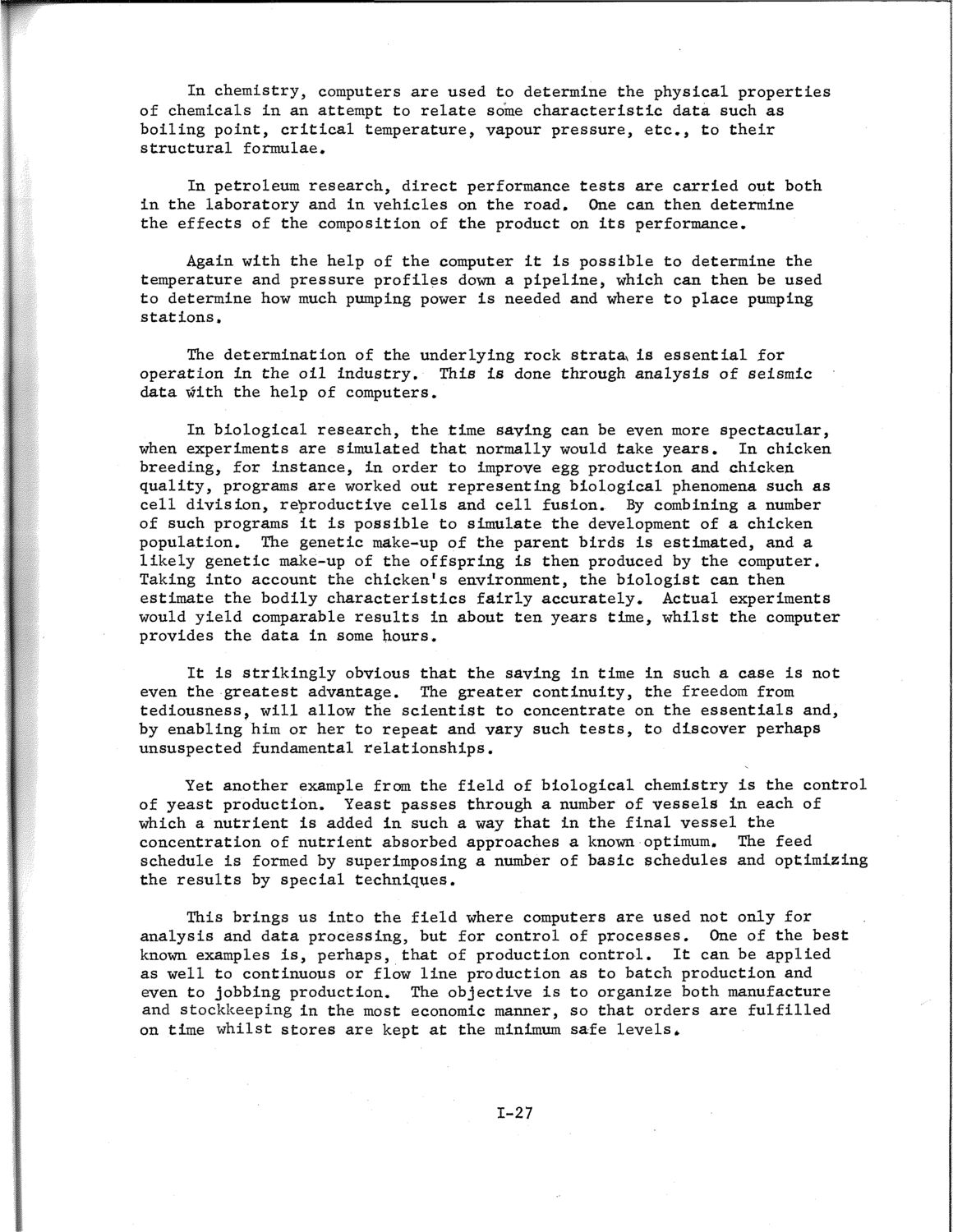| |
| |
Caption: SWE - Proceedings of the First International Conference of Women Engineers and Scientists
This is a reduced-resolution page image for fast online browsing.

EXTRACTED TEXT FROM PAGE:
In chemistry, computers are used to determine the physical properties of chemicals in an attempt to relate some characteristic data such as boiling point, critical temperature, vapour pressure, etc., to their structural formulae. In petroleum research, direct performance tests are carried out both in the laboratory and in vehicles on the road. One can then determine the effects of the composition of the product on its performance. Again with the help of the computer it is possible to determine the temperature and pressure profiles down a pipeline, which can then be used to determine how much pumping power is needed and where to place pumping stations. The determination of the underlying rock strata* is essential for operation in the oil industry. This is done through analysis of seismic data with the help of computers. In biological research, the time saving can be even more spectacular, when experiments are simulated that normally would take years. In chicken breeding, for instance, in order to improve egg production and chicken quality, programs are worked out representing biological phenomena such as cell division, reproductive cells and cell fusion. By combining a number of such programs it is possible to simulate the development of a chicken population. The genetic make-up of the parent birds is estimated, and a likely genetic make-up of the offspring is then produced by the computer. Taking into account the chicken's environment, the biologist can then estimate the bodily characteristics fairly accurately. Actual experiments would yield comparable results in about ten years time, whilst the computer provides the data in some hours. It is strikingly obvious that the saving in time in such a case is not even the greatest advantage. The greater continuity, the freedom from tediousness, will allow the scientist to concentrate on the essentials and, by enabling him or her to repeat and vary such tests, to discover perhaps unsuspected fundamental relationships. Yet another example from the field of biological chemistry is the control of yeast production. Yeast passes through a number of vessels in each of which a nutrient is added in such a way that in the final vessel the concentration of nutrient absorbed approaches a known optimum. The feed schedule is formed by superimposing a number of basic schedules and optimizing the results by special techniques. This brings us into the field where computers are used not only for analysis and data processing, but for control of processes. One of the best known examples is, perhaps, that of production control. It can be applied as well to continuous or flow line production as to batch production and even to jobbing production. The objective is to organize both manufacture and stockkeeping in the most economic manner, so that orders are fulfilled on time whilst stores are kept at the minimum safe levels* 1-27
| |